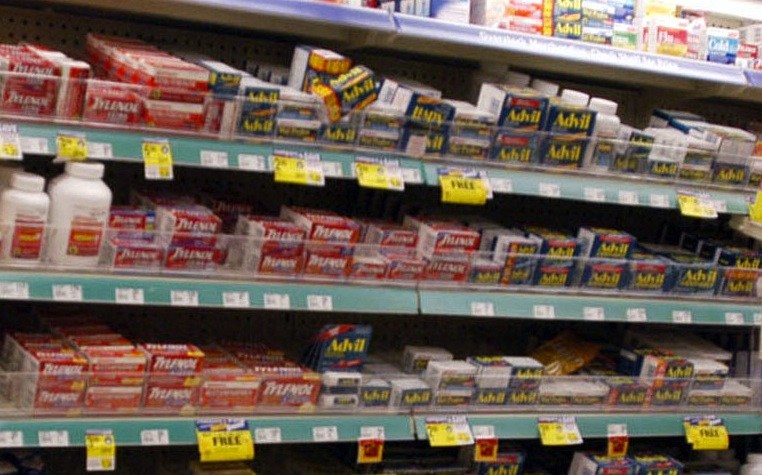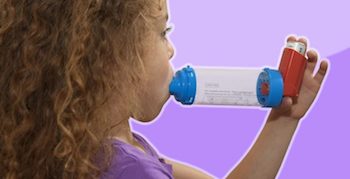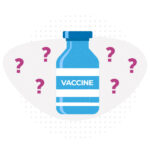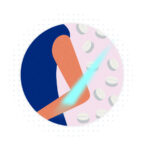Acetaminophen does not aggravate young children’s asthma

Your toddler is screaming in pain. Her forehead is burning. You rush to your local drugstore. What do you get — Tylenol or Motrin? And by the way, she also has asthma.
Recently, many parents have been under the impression that acetaminophen (Tylenol, etc.) may do more harm than good in young children with asthma.
“There’s been a lot of ‘smoke’ about this, based on a lot of retrospective observational data,” says Wanda Phipatanakul, MD, MS, of Boston Children’s Hospital’s Division of Allergy and Immunology.
The studies in question concluded that the common over-the-counter remedy can cause asthma exacerbations. Reviewing these studies, one author concluded, “Until future studies document the safety of this drug, children with asthma or at risk for asthma should avoid the use of acetaminophen.”
The Acetaminophen Versus Ibuprofen in Children with Asthma (AVICA) trial, led by Phipatanakul for the National Heart, Lung and Blood Institute’s AsthmaNet now sets the record straight. The only randomized, controlled, prospective study of this question to date, it finds acetaminophen and ibuprofen (Motrin, etc.) to be equivalent in terms of asthma symptoms.
“We found no matter how you slice it, there was absolutely no difference between Tylenol and Motrin,” says Phipatanakul.
Because of their retrospective nature, she notes, the earlier studies couldn’t exclude the possibility that the asthma exacerbations were caused by the respiratory infections themselves.
“The toddler age is a wheezy age when kids are developing asthma, but they also get a lot of fevers and colds,” she says. “Without a randomized design, it’s hard to tease out the effects of medications.”
Going head to head in asthma
The 18-site AVICA trial, published in the August 18 New England Journal of Medicine, enrolled 300 children 1 to 5 years old with mild persistent asthma. Their families were randomized to use either acetaminophen or ibuprofen as indicated for pain or fever over a 48-week period.
Can asthma be nipped in the bud? Phipatanakul is also leading a multicenter asthma prevention trial.

Can asthma be nipped in the bud? Phipatanakul is also leading a multicenter asthma prevention trial.
Both groups received the same asthma control therapies: daily inhaled glucocorticoids, as needed inhaled glucocorticoids, and daily oral leukotriene receptor antagonist. (The asthma therapies were given in varying order as part of a concurrent randomized trial, making this, in effect, a “trial within a trial.”) Medication adherence was closely monitored.
Of the original 300 children, 226 (75 percent) completed the study. Children in the acetaminophen and ibuprofen groups used similar amounts of these medications for pain and/or fever (median, 5.5 doses).
During the 48 weeks, there were no statistically significant differences between groups:
- The number of asthma exacerbations per child averaged 0.81 in the acetaminophen group versus 0.87 in the ibuprofen group.
- At least one asthma exacerbation occurred in 49 percent of the acetaminophen group, vs. 47 percent of the ibuprofen group. At least two episodes occurred in 21 and 24 percent, respectively.
- The percentage of days with full asthma control were virtually the same for acetaminophen and ibuprofen: 85.8 and 86.8 percent, respectively.
- Use of “rescue” medication (albuterol) was essentially the same: 2.8 vs. 3.0 puffs per week.
- Unscheduled healthcare visits for asthma were equivalent, averaging 0.75 vs. 0.76 episodes per child.
While the study was modest in size, it was powered to detect any clinically significant differences, more so than past retrospective studies, Phipatanakul notes. “There was no difference that would cause me to be alarmed,” she says.
Since the study was limited to young children with mild persistent asthma receiving asthma controller therapy, the authors also note that their findings may not apply to other age groups or children with more severe asthma. Further studies will be necessary to answer those questions.
William J. Sheehan, MD, of Boston Children’s Hospital was first author on the paper. The study was funded by The National Heart, Lung and Blood Institute’s Asthma Network (AsthmaNet) and grants from the National Institutes of Health (HL098102, HL098096, HL098075, HL098090, HL098177, HL098098, HL098107, HL098112, HL098103, HL098115, TR001082, TR000439, TR000448, TR000454, K23AI104780, and K24AI106822).
Related Posts :
-

Will early intervention prevent asthma in school-age children?
Asthma affects about 1 in 10 children, often sending them to the emergency room or causing them to miss school. Allergic conditions ...
-

Will people accept a fentanyl vaccine? Interviews draw thoughtful responses
In 2022, more than 100,000 people died from opioid overdoses in the U.S., according to the National Center for Health Statistics. ...
-

Three ways to ensure your child has the proper asthma medication
Children who have asthma should always have access to medication. But a manufacturer’s decision to stop producing a popular ...
-

Naloxone on demand: Shining a light to reverse opioid overdose
Overdose deaths from fentanyl and other opioids are at record highs in the U.S. Naloxone, if delivered soon after ...





